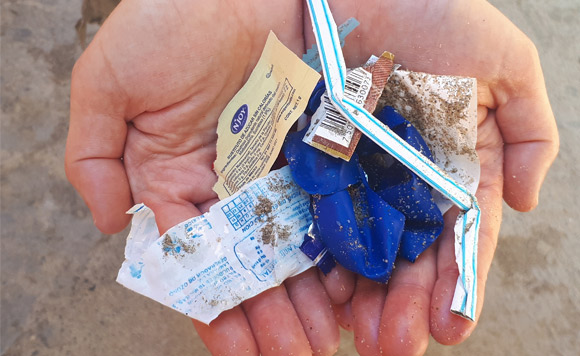by Tina Kelly, Shaw Centre for the Salish Sea –
Promises, promises. When the Shaw Ocean Discovery Centre opened in 2009 (now the Shaw Centre for the Salish Sea), a four- by eight-foot space on the wall featured conservation promises handwritten by visitors. One promise from those early days still stands out: “I promise to teach my children to clean up the environment better than they clean up their rooms.” That same year across the globe, another organization was blossoming and their goal also included inspiring citizens to think about marine conservation.
Take 3, or Take 3 for the Sea, born in Australia, is now becoming a global movement. Their mission is “to connect people to the planet by inspiring participation in simple actions.” The message is simple: “take three pieces of trash with you when you leave the beach, waterway or anywhere, and you have made a difference.” Even trash dropped far inland can make its way to the ocean through wind, rivers, streams and storm drains.
You’d be hard pressed to find a spot on Earth not touched by trash. Rubbish reports compiled from large-scale public clean-ups of beaches and other environments in Australia and Canada show the same items over and over again. What tops the list? All of the most common finds fall into the category of single-use products: cigarettes, food wrappers, beverage containers, plastic bottle caps, plastic bags, straws, take-away containers and plastic lids. Good habits are catching on – using cloth grocery bags, carrying reusable cups and bottles and politely requesting “no straw” at the restaurant; but trash is still making its way into our environment, on top of the enormity of debris already out there.
Plastic and other trash contaminates air, land and sea. It enters our food and drinking water and it can injure or kill wildlife. This past March, two whales were found with stomachs full of plastic, much of it plastic bags – a Cuvier’s beaked whale in the Philippines with 88 lbs of plastic in its stomach and in Italy, a sperm whale contained 48 lbs of plastic garbage.
Plastic never disappears: it breaks down into smaller and smaller pieces but will always persist in the environment. A substantial amount of research is currently focused on the effects of microplastics on wildlife and our seafood supply. Intercepting plastics before they break down is something we can all do.
Think about making a promise, a promise to Take 3. Encourage others by snapping a picture and sharing it on social media – Facebook, Twitter and Instagram – using #Take3fortheSea and #Take3Challenge. At last count, these hashtags have been used in 129 countries. Join the movement and make a difference!
The Shaw Centre for the Salish Sea is open daily from 10 a.m. to
4:30 p.m. www.salishseacentre.org.




